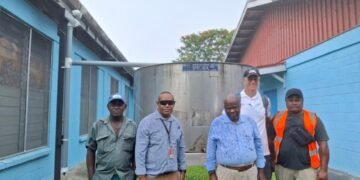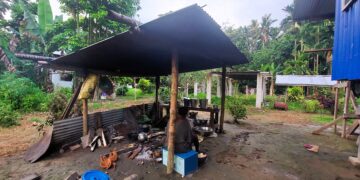Statistics Office report highlights mixed economic landscape with minor price drops and notable sectoral changes impacting consumers.
The latest report from the Statistics Office, a department of the Ministry of Finance and Treasury, highlights the recent changes in the cost of living for Solomon Islanders. The National Consumer Price Index (CPI), a key measure of inflation, shows slight decreases in April and May 2024, providing a mixed picture of the economic landscape.
What is the Consumer Price Index (CPI)?
The Consumer Price Index (CPI) measures the average change over time in the prices paid by consumers for a basket of goods and services. This basket includes essential items such as food, housing, transportation and medical care. The CPI is an important indicator as it reflects the cost of living and purchasing power of households. When the CPI increases, it means that the prices of goods and services are rising, which can reduce the purchasing power of consumers.
Recent Trends in the CPI
In April and May 2024, the CPI saw slight decreases. The overall index fell by about 0.3% each month. This means that, on average, consumer prices were a little lower in these months compared to the previous months. However, compared to the same months last year, prices are still higher by approximately 3.5% to 3.6%.
Key Changes in Specific Areas
- Food and Non-Alcoholic Beverages: Prices for these essential items increased slightly, which can affect household budgets.
- Alcohol, Tobacco and Narcotics: There were significant price drops, providing some relief for consumers of these products.
- Housing and Utilities: Costs for housing, water, electricity, and gas increased noticeably, making it more expensive to maintain a household.
- Household Items and Maintenance: Prices saw minor changes, with a small decrease in April and a slight increase in May.
- Transport: There were minor fluctuations with small decreases in April and slight increases in May.
- Miscellaneous Goods and Services: Prices remained stable in April but saw a small decrease in May.
What is Inflation and How Does It Work?
Inflation is the rate at which the general level of prices for goods and services rises, eroding purchasing power. When inflation is high, each unit of currency buys fewer goods and services. Central banks and governments monitor inflation closely and adjust economic policies to manage its effects.
How Inflation Affects the Economy and People’s Lives
- Cost of Living: Higher inflation means that prices for everyday items, such as food and fuel, increase. This can make it more expensive for households to maintain their standard of living.
- Purchasing Power: Inflation reduces the value of money. As prices rise, the same amount of money buys fewer goods and services, which can squeeze household budgets.
- Interest Rates: To control inflation, central banks may raise interest rates, which can increase borrowing costs for businesses and consumers.
- Savings and Investments: High inflation can erode the value of savings if interest rates on deposits are lower than the inflation rate. It can also affect investment returns.

Driving Factors of Inflation
- Demand-Pull Inflation: When demand for goods and services exceeds supply, prices rise. This can occur during economic booms when consumer spending is high.
- Cost-Push Inflation: When the costs of production increase (e.g., higher wages or raw material costs), businesses may pass these costs onto consumers in the form of higher prices.
- Imported Inflation: When the prices of imported goods rise, it can lead to higher overall prices domestically. This is particularly relevant for countries reliant on imports.
- Monetary Policy: Central banks can influence inflation through their control of the money supply and interest rates. Expansive monetary policies can lead to higher inflation.
What is Cost of Living and How is it Measured?
The cost of living refers to the amount of money needed to cover basic expenses such as housing, food, taxes and healthcare in a specific place and time period. It is a critical measure for understanding the economic well-being of individuals and families. The cost of living is often measured by tracking changes in the prices of a selected basket of goods and services, which is what the CPI represents.
Provincial Differences in Cost of Living
Different towns across the Solomon Islands experienced varying changes in their cost of living:
- Honiara: Prices increased by about 4.6% in April and 3.8% in May. This indicates a higher cost of living in the capital city.
- Auki: Prices rose by around 3.1% in April and 2.9% in May.
- Gizo: Saw smaller increases with prices up by 1.8% in April and 2.2% in May.
- Noro: Had price increases of 2.2% in April and 2.4% in May.

Why Different Provinces Have Varying Changes in Cost of Living
The cost of living varies significantly across provincial centers in the Solomon Islands, influenced by a combination of economic, logistical and local market dynamics:
- Economic Activity and Development:
- Honiara vs. Auki, Gizo and Noro: Honiara, as the capital city and economic hub, experiences higher economic activity and development. This results in greater demand for goods and services, driving prices higher. Auki, Gizo and Noro, with lower economic activity levels, generally experience less demand pressure on prices.
- Population Density and Market Size:
- Urban vs. Rural: Higher population densities in urban centers like Honiara and Auki increase competition for resources and services, which can escalate prices. Gizo and Noro, with smaller populations and markets, experience less intense competition and generally have more stable or lower prices.
- Logistical Challenges and Infrastructure:
- Transportation Costs: Remote locations such as Gizo and Noro face logistical challenges and higher transportation costs for imported goods. Despite this, the presence of an international port in Noro facilitates direct imports, potentially reducing overall costs compared to more centralized locations like Honiara.
- Supply Chain Dynamics:
- Local Production and Imports: Honiara’s reliance on imported goods and longer supply chains can lead to higher prices due to transportation and distribution costs. In contrast, Gizo, Noro, and Auki may benefit from local production capabilities or proximity to agricultural areas, which can lower the cost of essential goods.
- Government Policies and Subsidies:
- Regional Interventions: Policies, subsidies and tax structures implemented by the government can influence cost-of-living disparities. Government interventions in remote areas may help stabilize prices for essential goods and services, mitigating the impact of higher transportation costs.
- Market Competition and Consumer Demand:
- Local Market Dynamics: Differences in market size and competition contribute to varying price levels. Honiara’s larger market and higher consumer demand lead to more competitive pricing among businesses, whereas Auki, Gizo and Noro experience less market competition, resulting in more predictable pricing for consumers.
Understanding these factors provides insight into why provincial centers like Honiara, Auki, Gizo and Noro shows varying cost-of-living conditions. Economic conditions, logistical efficiencies and local market dynamics collectively shape the affordability and accessibility of goods and services across different centres in the country.
What Solomon Islanders Need to Know
The recent changes in the CPI and inflation rates provide valuable insights into the economic conditions in the Solomon Islands:
- Slight Relief but Higher Overall Costs: While there has been a slight decrease in prices over the past two months, the overall cost of living remains higher than last year. This means that everyday expenses are still rising, affecting household budgets.
- Rising Housing and Utility Costs: The noticeable increase in housing and utility costs can strain household finances, making it more expensive to maintain a home.
- Significant Drops in Alcohol and Tobacco Prices: The significant decrease in the prices of alcohol and tobacco may provide some financial relief for consumers who purchase these items regularly.
- Regional Disparities: The cost of living varies across different towns, with Honiara experiencing higher price increases compared to towns like Gizo and Noro. This highlights disparities in living costs.

Current Economic Conditions
The Solomon Islands, like many other countries, faces economic challenges such as rising inflation and fluctuating prices. The government is continuously monitoring these trends to ensure that appropriate measures are taken to manage the economic conditions and support the well-being of its citizens.
Conclusion
Understanding the CPI and its recent trends helps Solomon Islanders make informed decisions about their finances. The mixed trends in consumer prices, with slight recent decreases but overall higher costs compared to last year, highlights the importance of staying informed about economic conditions and managing household budgets effectively. The Statistics Office will continue to provide updates to keep the public informed about the cost of living and inflation rates in the Solomon Islands.
Source: Solomon Islands National Statistics Office


















































































